Miraculous Mine in Mexico is Covered in Crystals
The discovery of the Naica Crystal Mines in Mexico is a testament to human determination. Locating and examining them showcased an unwavering drive to explore even under the most extreme conditions.
Nestled in Chihuahua, these mines are an awe-inspiring geological marvel: colossal gypsum crystals fill it, some stretching up to 12 meters in length and weighing several tons.
What is Gypsum?
Gypsum is scientifically known as calcium sulfate dihydrate (CaSO4·2H2O). It is a soft sulfate mineral extensively mined for various purposes. It serves as a crucial component in fertilizers and is predominantly utilized in the production of plaster, drywall, and chalk.

Larry D. Moore/Wikimedia Commons
While gypsum is a mineral widely recognized as the main component of drywall, it’s also often utilized in brewing pale ale and India pales. Gypsum has actually been utilized by humans for millennia.
Naica Crystal Mines Have Extreme Conditions
The mines have an incredibly unforgiving environment, with temperatures soaring to a scorching 50°C (122°F) and humidity levels hovering close to 100%.
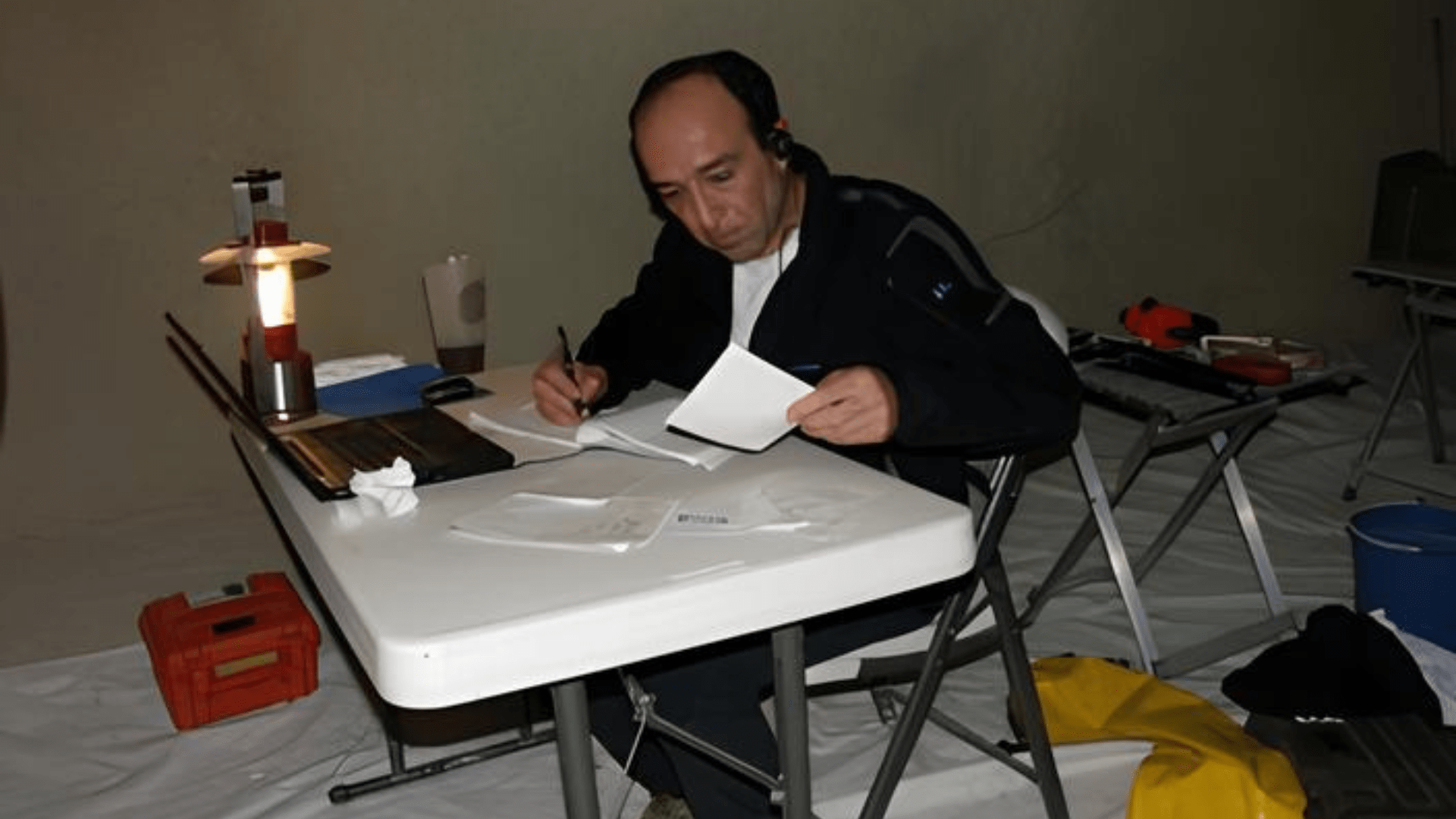
Oliodisemini/Wikimedia Commons
Despite these off putting conditions, individuals from various backgrounds are drawn to these caverns to witness nature’s grandeur firsthand.
Naica Crystal Mines Offer a Glimpse Into the Earth’s Past
Discovered in 2000 by Juan and Pedro Sánchez, miners who stumbled upon them while drilling in the Naica Mine, the Naica Crystal Caves are a significant milestone in geological exploration.
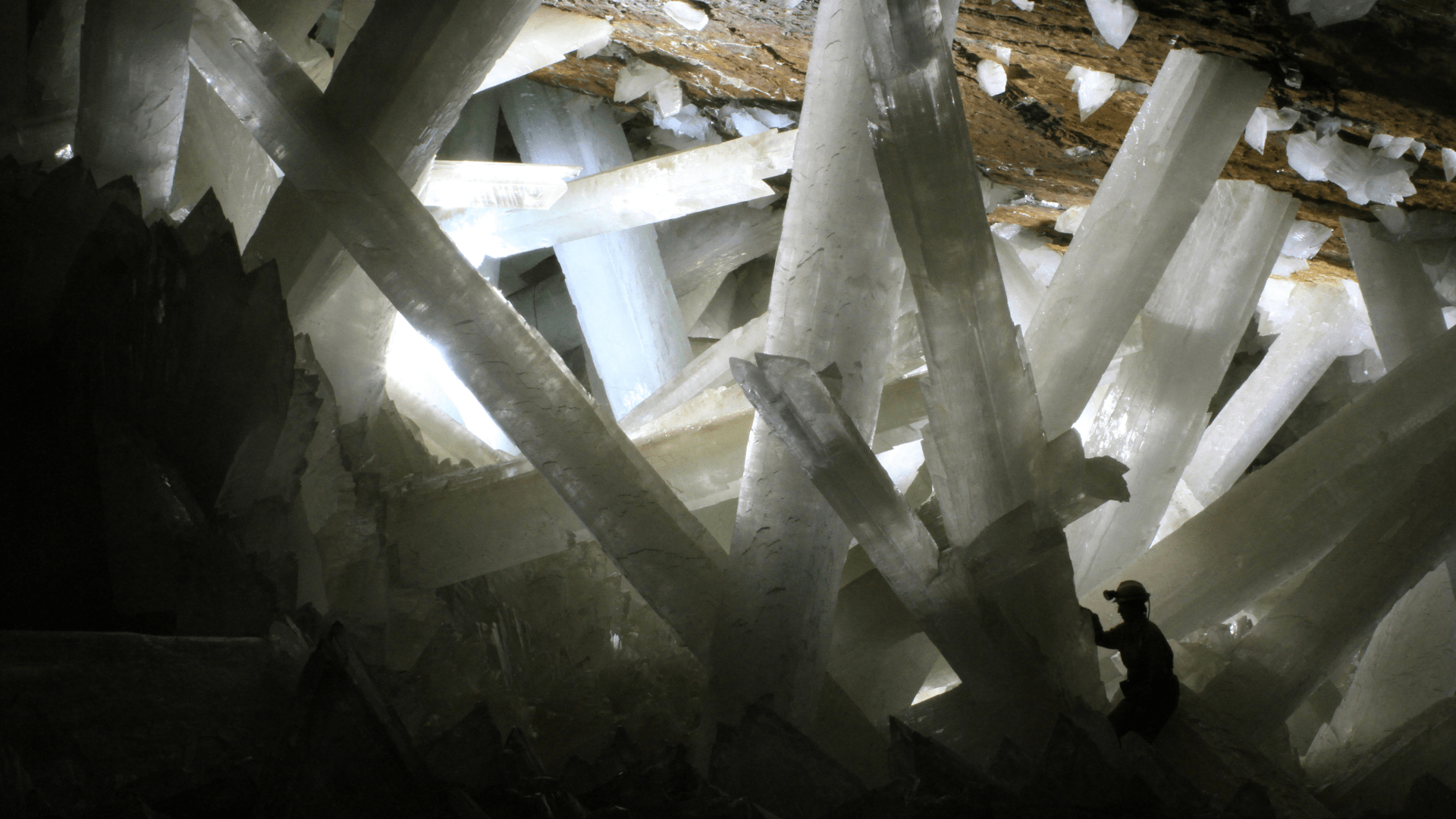
Alexander Van Driessche/Wikimedia Commons
Formed over millennia under specific geological conditions, these caves offer a glimpse into the Earth’s past, with crystals growing due to the interplay of heat from nearby magma chambers and mineral-rich groundwater.
Ideal Conditions in the Sierra de Naica Mountain for Crystal Formation
Beneath the Sierra de Naica Mountain lies a network of regional fault lines, crucial in its geological history.
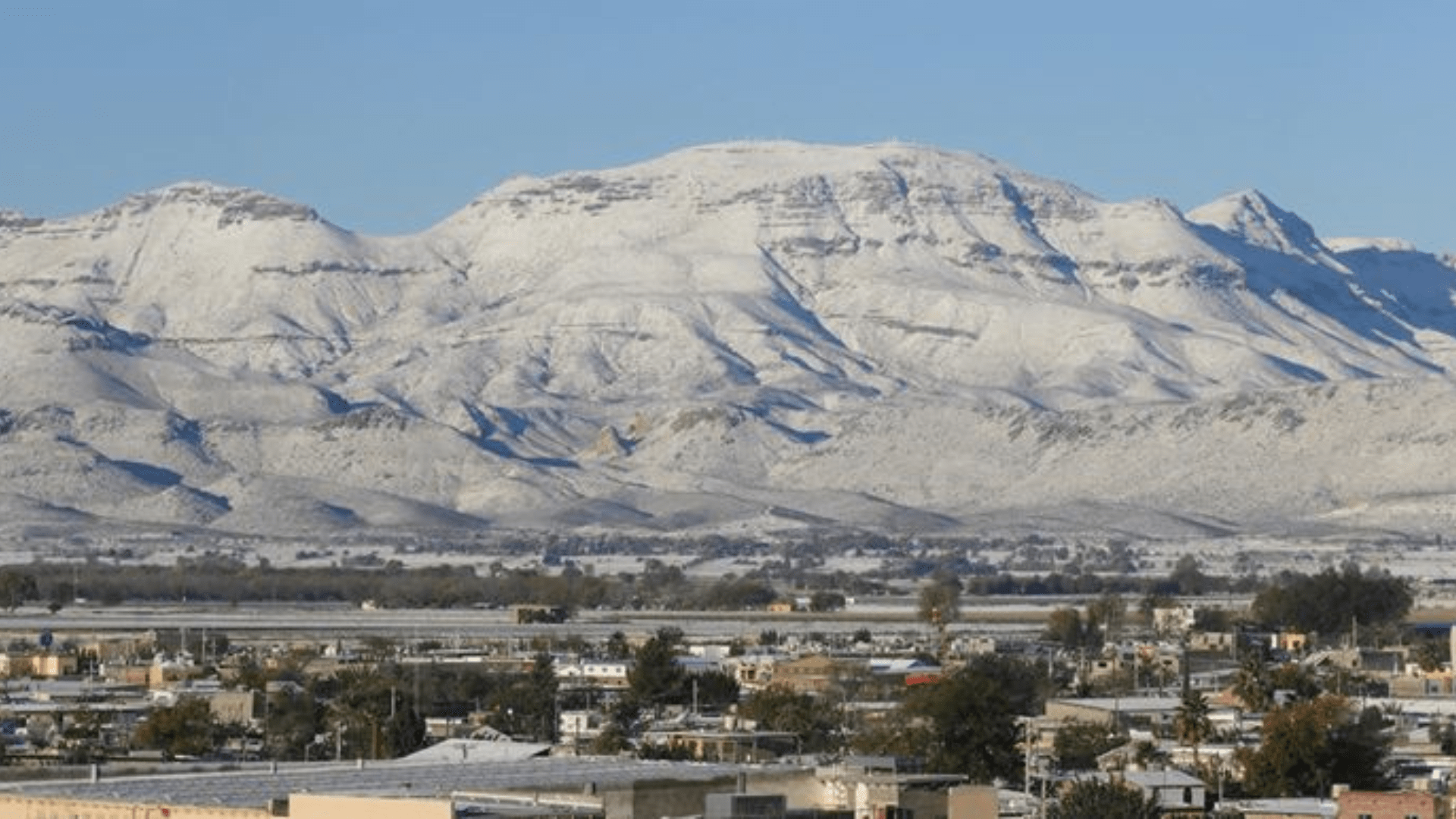
Kevin Rodríguez Macías/Wikimedia Commons
Approximately 26 million years ago, magma began its ascent towards the Earth’s surface through these fault lines, culminating in the formation of the mountain. This volcanic activity played a pivotal role in the creation of the massive crystals found within.
How Did the Massive Gypsum Crystals Form?
The Giant Crystal Cave is a U-shaped cavity carved into the limestone terrain. Spanning roughly 98 feet (30 meters) in length and 33 feet (10 meters) in width, this cavern remained submerged in groundwater for tens of thousands of years. The upward movement of groundwater was driven by a deeper magma chamber, carrying minerals such as anhydrite.
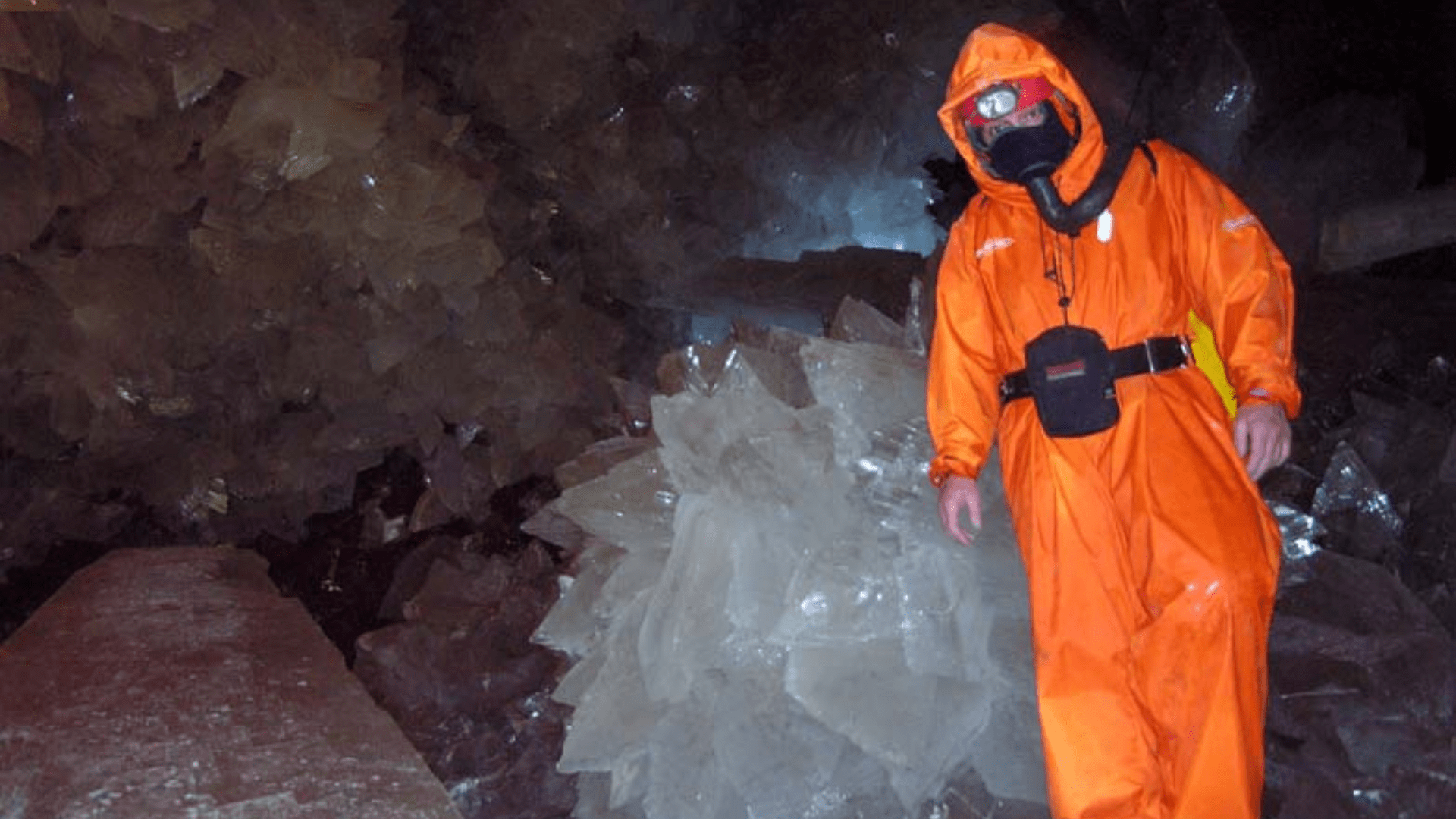
Oliodisemini/Wikimedia Commons
Anhydrite, stable at temperatures exceeding 136 degrees Fahrenheit (58 degrees Celsius), remained intact within the cave’s environment. However, at lower temperatures, the mineral underwent dissolution and subsequent crystallization as gypsum.
Chihuahua Crystal Mines Are an Amazing Research Opportunity
For scientists and researchers, the caves present a golden opportunity to delve into the mysteries of crystal formation and unearth insights into the planet’s geological history.

Robert M. Lavinsky/Wikimedia Commons
Through meticulous analysis of the crystals and surrounding rock formations, they can piece together clues about past climates, tectonic movements, and hydrothermal processes.
Adventurers and Scientists Alike are Drawn to the Mines
Of course, it’s not just scientists who are drawn to the Naica Crystal Mines; adventurers and explorers are equally captivated by the allure of these underground wonders.
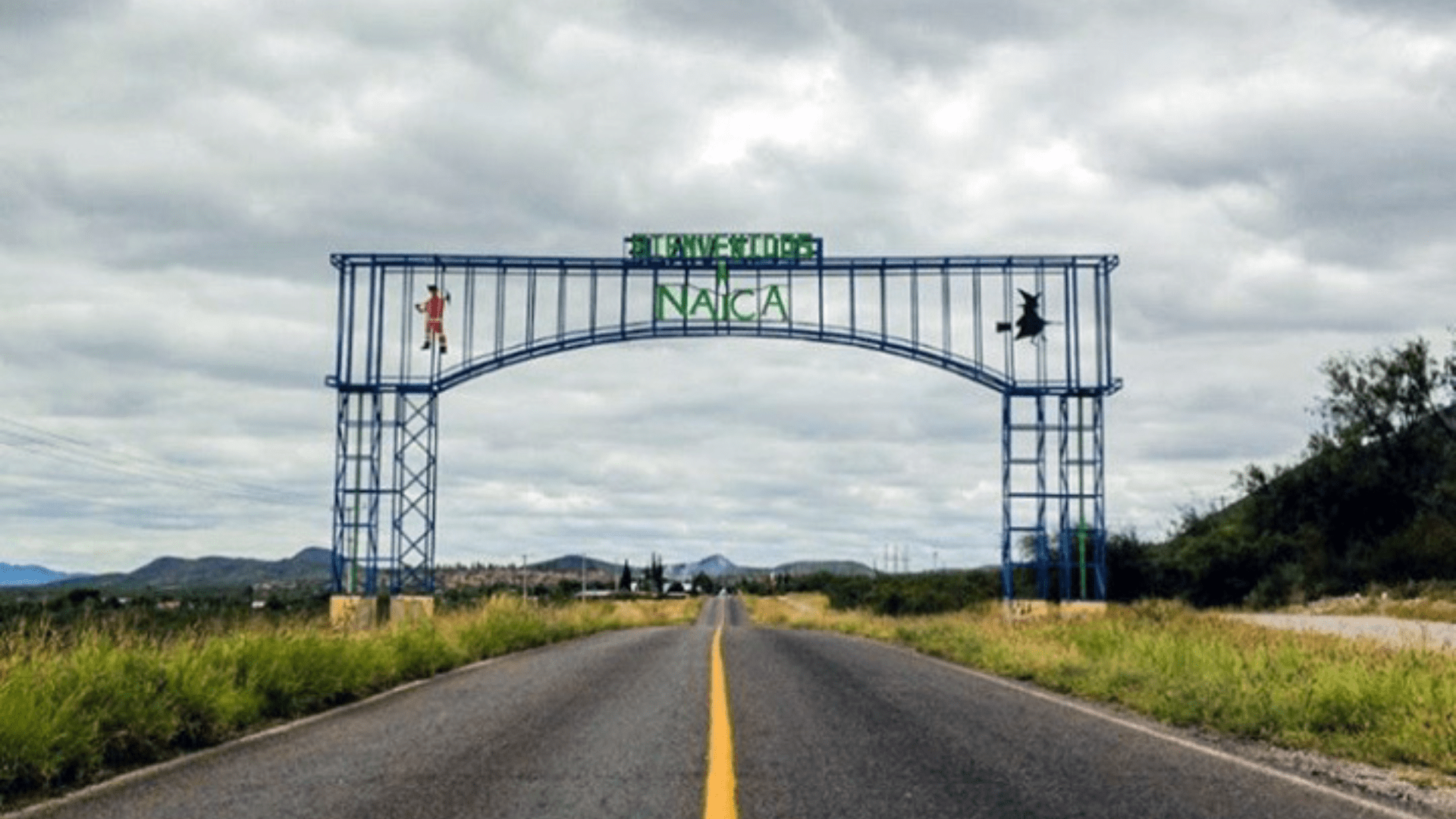
MikSed/Wikimedia Commons
Despite the formidable challenges posed by the harsh conditions, daring individuals seek to immerse themselves in the surreal landscape of the crystal caverns, driven by an insatiable curiosity and a thirst for adventure.
The Allure of the Giant Crystal Cave is Risky
However, the allure of the crystal caves comes with inherent risks. The extreme temperatures and oppressive humidity levels present grave dangers to human safety.
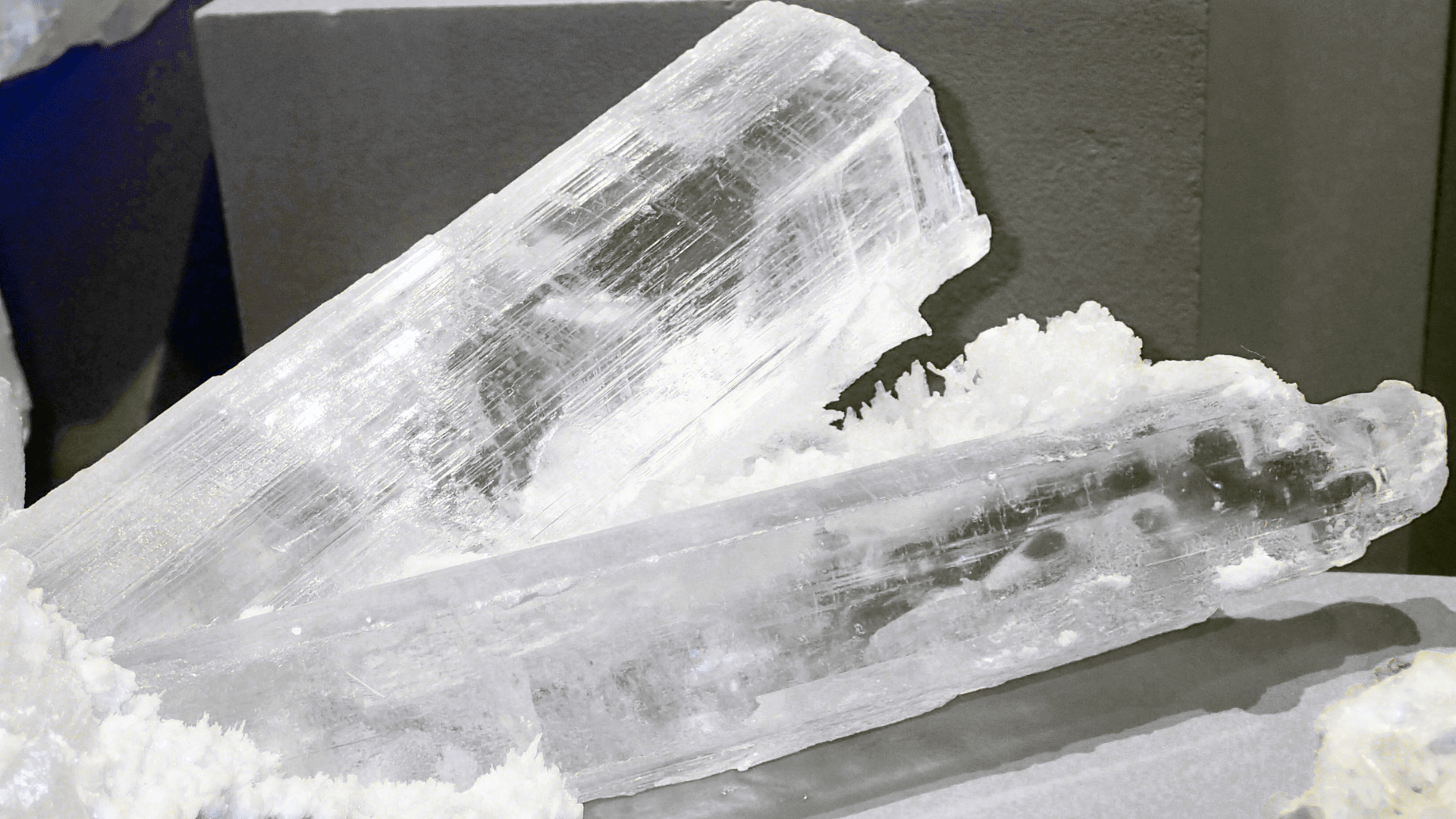
James St. John/Wikimedia Commons
All of this necessitates meticulous planning and preparation for those venturing into the depths. Nevertheless, the magnetism of the Naica Crystal Mines continues to beckon visitors from far and wide, eager to behold the splendor of this natural marvel.
The Extreme Conditions Limited Cave Excursions to 10 Minutes
The extreme humidity posed a significant risk to visitors and researchers, as it could potentially cause fluid condensation within visitors’ lungs that proves fatal.
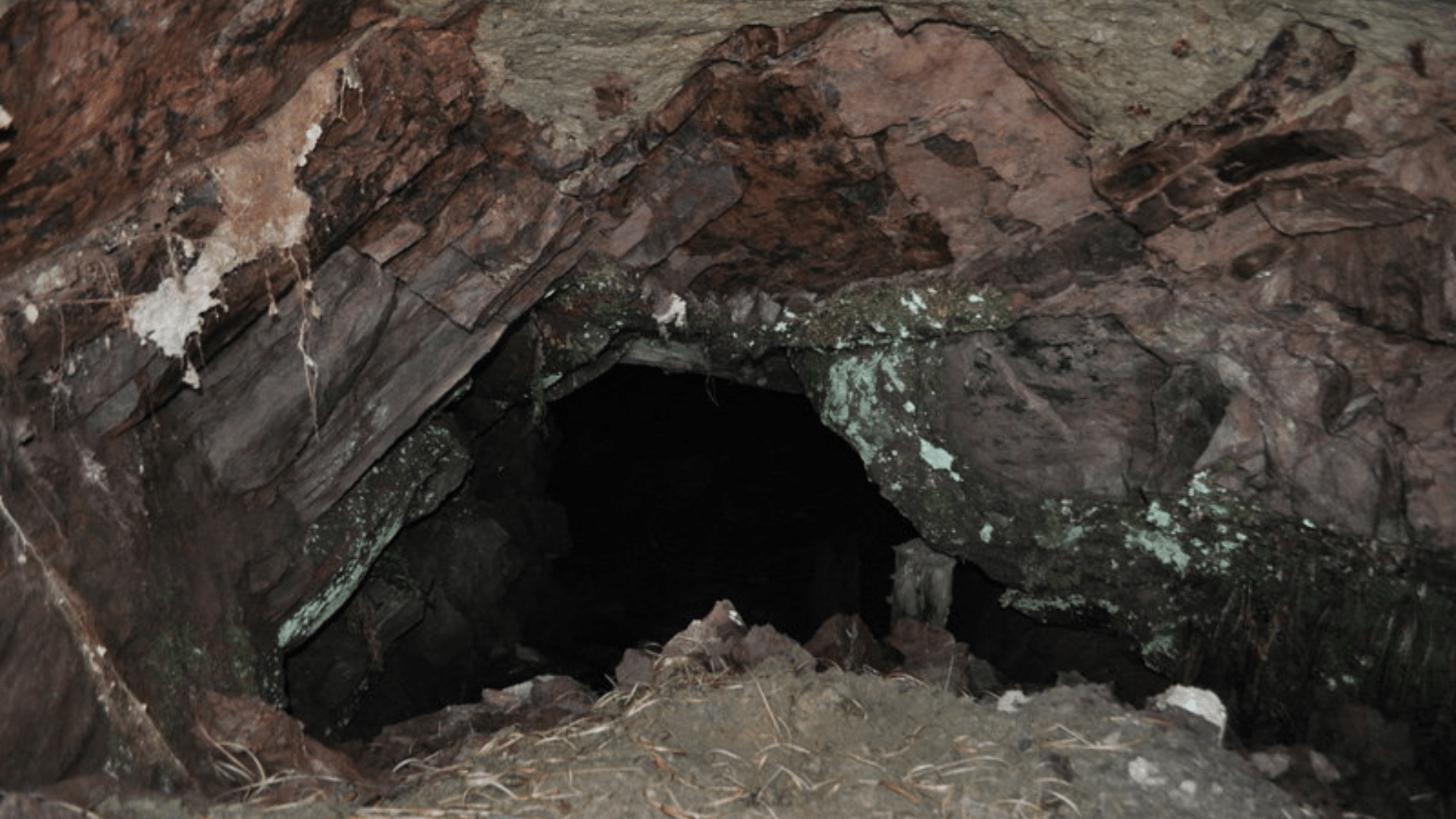
Ashley Dace/Wikimedia Commons
Initially, explorers were restricted to brief 10-minute excursions into the cave due to safety concerns. However, advancements in technology, such as specially designed cooling suits equipped with respirators, enabled scientific teams to extend their stays slightly. These suits provided a source of chilled, breathable air, allowing for excursions lasting between 15 to 60 minutes.
Dormant Microbial Life and Dewatering the Cave
In 2008 and 2009, NASA Astrobiology Institute director Penelope Boston ventured into the cave, where she made a groundbreaking discovery. Trapped inside one of the crystals were microbial life forms, possibly lying dormant for up to 50,000 years. This revelation shed light on the cave’s unique ecosystem and its potential implications for astrobiology.
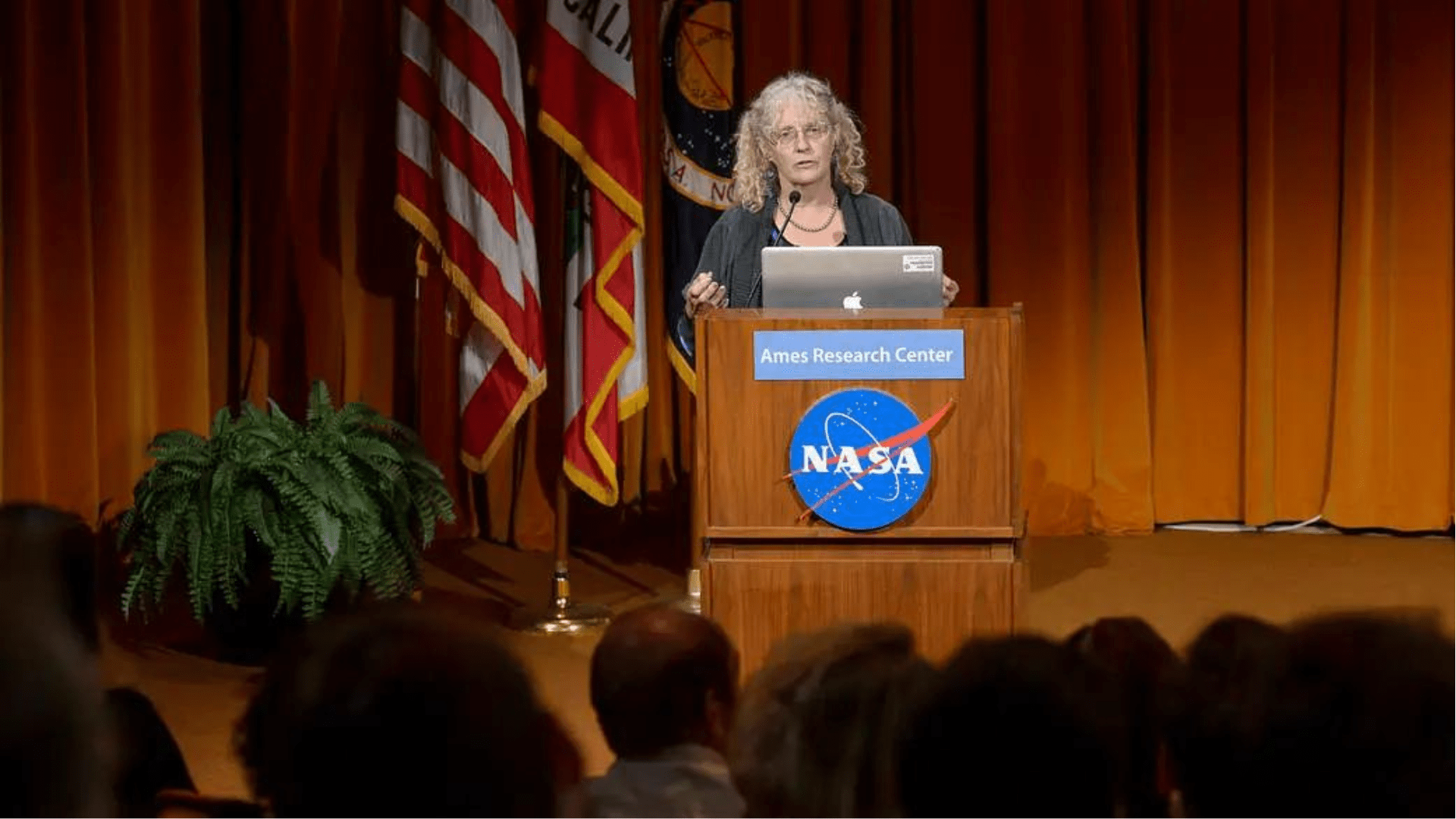
NASA/Wikimedia Commons
The process of dewatering the cave proved to be a significant development for scientific research. However, it raised concerns about the impact on the crystals themselves. Following the cessation of pumping in 2017, groundwater refilled the cave, prompting questions about the structural integrity of the crystals. Experiments conducted on collected samples indicate potential compromises due to prolonged exposure to air over nearly two decades. Nevertheless, with water replenished, there is hope that these extraordinary crystals may resume their growth.
Continuing Importance of the Naica Crystal Cave
Recognizing the importance of preserving this geological treasure, concerted efforts have been made in recent years to safeguard the Naica Crystal Cave.
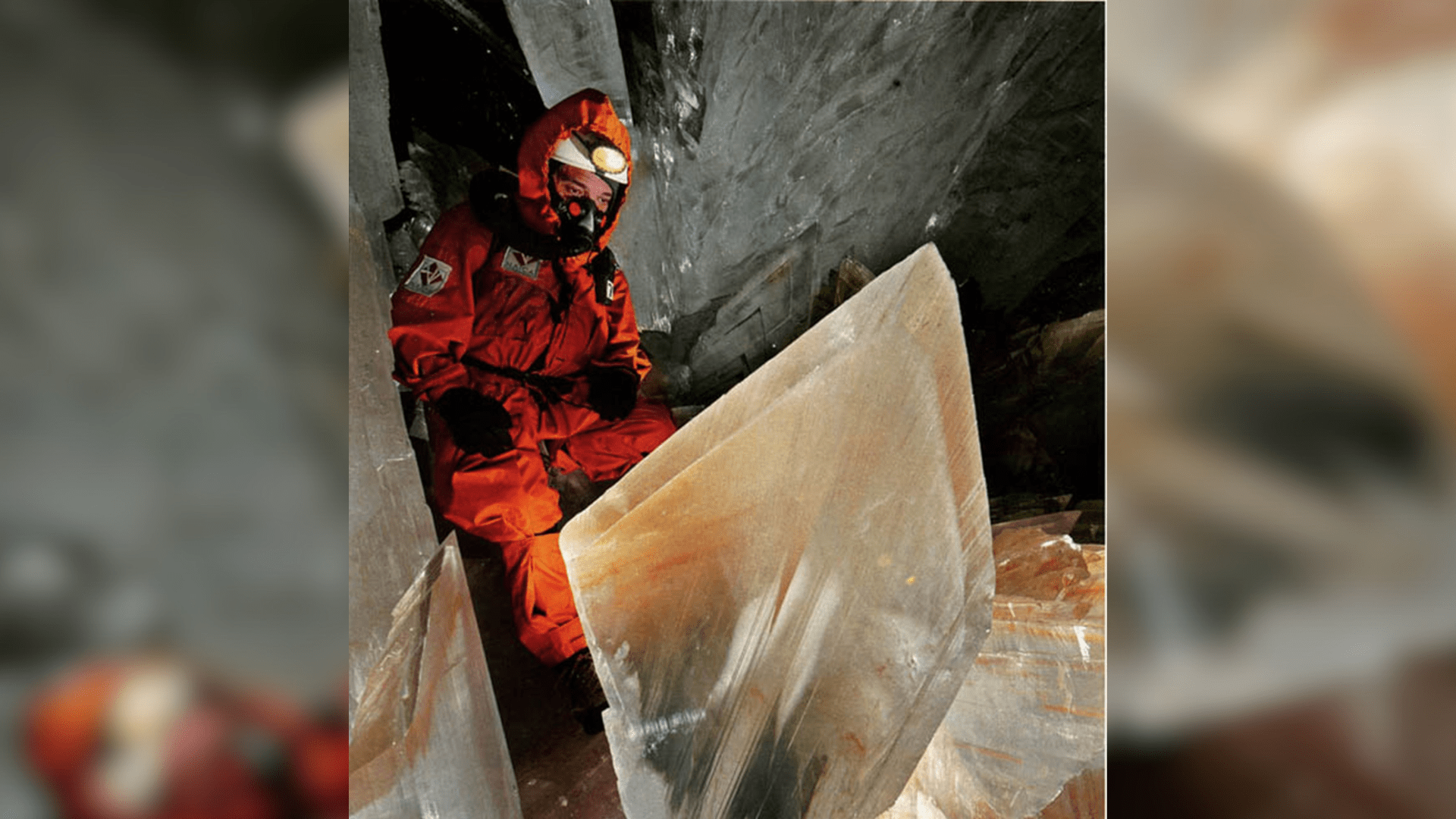
Oliodisemini/Wikimedia Commons
While access to the cave remains restricted, guided tours and scientific expeditions offer select individuals the opportunity to marvel at the sheer beauty and magnificence of this underground spectacle. As custodians of this priceless natural wonder, it is imperative that we continue to tread carefully and ensure its protection for generations to come.
